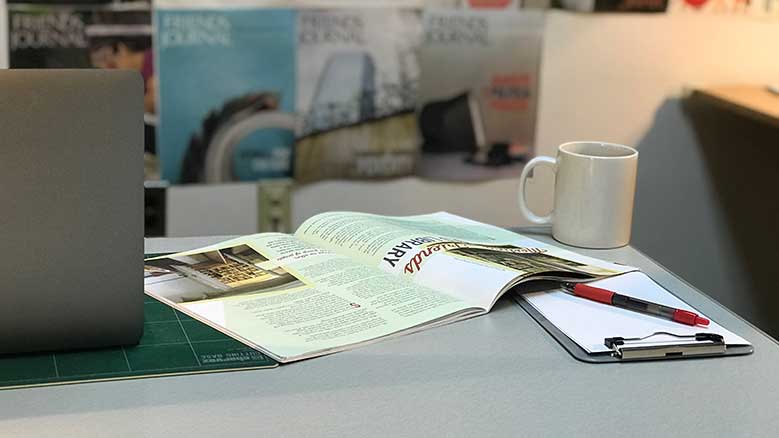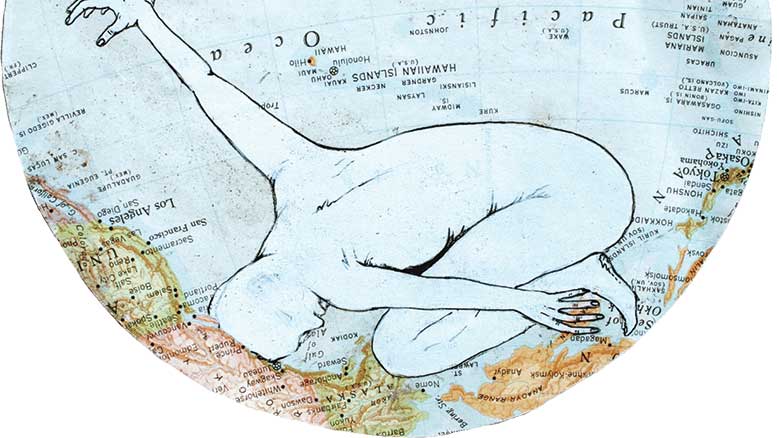You ask me: "What is the fine artist to do in America today? Where is he to find his position? How can he benefit society?"
Let us start with a few potent definitions of art (and I cannot quote the originators). "Art is a way which leads to moral perfection," "a way to create order out of chaos," "a search for truth." It has been a persistent urge of man since the Stone Age to lift himself beyond his earthly existence, to placate the gods or to glorify them, and to immortalize men’s deeds on Earth. Like religion, art is too strong an impulse to be suppressed by inimical forces; it will go on as long as this world exists.
A Fine Artist
An individual does not become an artist; he is born one. All he can do from the moment of recognition is to perfect himself spiritually, to learn how to handle his physical tools to perfection, to sharpen his perception and become sensitive to the world around and beyond him.
That is my conception of a "fine artist." Such a creature has to realize from the very beginning that no matter where he lives, he will have to struggle hard to maintain himself spiritually and physically because he is, by the nature of his calling, a nonconformist.
Society resents the dreamer or prophet who dares to hold up a mirror reflecting mankind’s and his own weaknesses. Society distrusts the person who dedicates himself to the "impractical" and intangible world of ideas. The true artist is usually way ahead of his own time and pays the penalty for it. Look at the lives of most great artists, poets, philosophers, or religious leaders—and weep!
The rewards, then, lie in the artist’s own breast, in the exaltation of creating, of perfecting, of developing gifts, joys which hold in balance the frustrations and agonies inevitably connected with the limitations of human capacities.
Financial rewards are purely coincidental, following the crazy-quilt pattern of fads, fashions, and vaguely felt spiritual needs of the human community, fluctuating with the social and economic pressures exerted upon it.
What an artist creates may be of great benefit—but not necessarily to this or the next generation.
Artists of Different Colors
There are artists of many different colors. I started my definition on the highest level, but there are also artists who have the ability to entertain, to cater to the more immediate human needs and human senses.
These artists may find a ready place in our society if they are able to anticipate the market in which commodities are sold with the help of visual aid. This includes not only the advertising field and the popular magazine, but also the art gallery which gears its sales to the decorator’s demands. Somewhere between the high and the low there is the field of book illustration, deeply rewarding to the interpretative artist who loves to associate himself with the great works of literature, or, through the illustration of children’s books, with the child who is so close to the artist’s heart.
Without passing judgment, I will only say that the artist takes his choice, according to his own lights, gifts, and conscience.
As a Nation
That industry has become the most powerful art patron is evident in predominantly industrial America. (I hear that in Italy the artist is still able to sell directly to the man in the street who shares his life and his tradition.)
We have little or no national tradition in American art, which began as a hodgepodge of European leftovers. As a nation we show little or no interest in art. Our government does not sponsor or further art, unless it be the officially sanctioned neoclassical mural or monument in stone. Our leaders in politics, labor, and education pay little attention to art, domestic or foreign, unless it be of the calendar or magazine variety; and the so-called common man follows the leaders.
Who, then, supports the handful of fine-or-easel-variety of artists, scarcely able to support themselves? They are prevented from starving by a handful of museums and galleries. These in turn are supported by a few handfuls of appreciative art lovers, intellectuals, professional people, actors, and such, who seem to prefer the uncertain value of contemporary art to the gilt-edged security of the old or recent masters.
"Finally," you ask, "how do you think America can develop a heritage of art appreciation and creativity in its people?"
Doubtless the machine is here to stay and will spread its power and influence over a steadily widening area, producing not only more and more consumer goods but also more deadly weapons of mass destruction. It may provide more good reading matter to more people, but it also may spread more fear, crime, and horror through visual mass communication. The machine may ultimately transport us to other planets, or it may wipe us off this one.
It seems to me that raising the cultural level of a nation is not synonymous with the raising of its standards of living. Many nations with insignificant natural resources and small industrial capacities have arrived at a much higher cultural level than ours.
If we permit the machine and its material values to rule our lives, I see little hope for the spiritual revival which is necessary to stimulate interest in the appreciation and practice of art.
To whom to turn? Religion has not always been beneficial to the arts. It has sometimes stifled and has often corrupted them. But it is my contention that the aspirations of religion are so much akin to the aspirations of art that an alliance between the two might again provide a renaissance for both. I do not necessarily allude to the sponsorship of organized churches, synagogues, or religious movements, Eastern or Western. But I do believe in a spiritual alliance which could provide a mighty stimulus to the appreciation and creation of art forms capable of enhancing our lives, sharpening the awareness of our spiritual nature, and giving new meaning and dimension to our place in the universe, the world, the nation, and the community.
All this may sound Utopian to the practical people. To me it sounds like the only way to salvation, to peace among nations, to a recognition of the dignity of the individual, to a richer, fuller, more joyful life of creativity for all people, artists and laymen alike. We recognize that on our present course we are bound, jet-propelled, for perdition; Utopia might be worth trying.
The fate of the artist is linked to the fate of mankind at large. It follows, then, that no artist can possibly seclude himself without losing touch with his fellow men, whose yearnings the artist is trying to express through his own peculiar gift.
Retreat for meditation, study, and work is the necessary concomitant in the artist’s constant effort to give voice, form, and expression to the problems of his time. But he has to come back to the world we live in, assume his place, work tirelessly on himself to perfect his insight and outlook, his mind, his heart, and his hands. Only then can any individual reach the point where he can influence or educate others. Only then can man dare to hope that his little taper may light others among those around him and from there spread light among the people in the larger communities of men.
Once we have built a better society, not only in terms of physical comfort but in terms of ethical, spiritual, and cultural attainments, art will become a necessity because in its many creative forms it can best express man’s deepest and noblest desires, the search for the Eternal, transcending his animal existence—call it God, Truth, or Perfection.
All this may sound highly unattainable, but it comes from an individual who has been an artist all his life, who has had his share of joy and suffering, failure and success, and who has never regretted that experience. A member of a seemingly indestructible species, the artist in his creations has survived the work of the kings and the merchants who have claimed to rule the world.
—————————-
This is the unrevised text of an article that appeared in Friends Journal, June 9, 1956.




